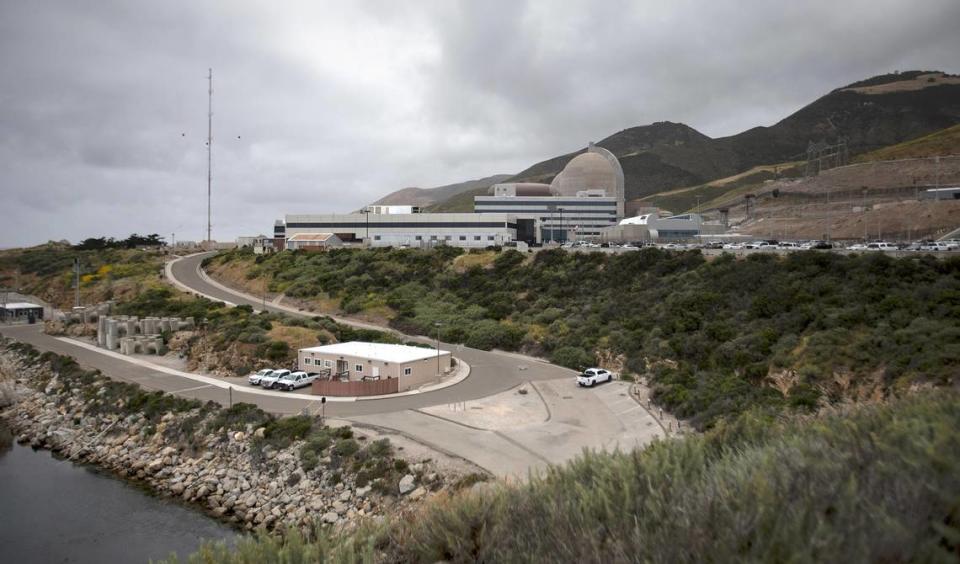Does California really need 5 more years of Diablo Canyon’s ‘reliable energy’? | Opinion
- Oops!Something went wrong.Please try again later.
The day before his high-profile meeting with Chinese President Xi Jinping, Gov. Gavin Newsom announced that California has added 4,922 megawatts of utility-scale battery storage to its grid since 2020, and expects another 1,894 megawatts to come online in the next two months. Comparatively, Diablo Canyon has 2,240 megawatts of capacity.
Translated into the key reliability metric of September Net Qualifying Capacity, that’s 6,525 megawatts for new batteries vs. 2,240 megawatts for Diablo Canyon, nearly a 3:1 ratio.
That’s significant because improved reliability was the premise that Newsom and the Legislature relied upon in Senate Bill 846 to spread the high costs of another five years of Diablo Canyon operations statewide, beyond PG&E’s service territory.
What about the energy to charge those batteries? Are we stuck using natural gas plants? No. The California Independent System Operator’s monthly renewables performance reports document that, between September 2020 and September 2023, metered renewables production soared by 42% from 2020’s 4.835 terawatt hours (the amount of power generated by a terawatt generator in one hour) to 2023’s 6.879 terawatt hours. If Diablo Canyon operated at 100% for all 30 days in September, it would produce 1.613 terawatt hours.
Opinion
Despite several years of hand-wringing by PG&E about disrupted supply chains allegedly causing slow progress on renewables and storage, the reliability pretext for extending Diablo Canyon’s operations may be fading away.
What’s not fading away is the prospect for continued above-market costs at the plant. PG&E admitted in its grant application to the U.S. Department of Energy that Diablo Canyon had suffered more than $2.1 billion in above-market costs during the most recent five years on record.
Even worse, when required to provide a cost forecast for the five-year extension to the California Public Utilities Commission, PG&E put the number at $5.2 billion. The Alliance for Nuclear Responsibility and TURN, an independent statewide utility consumer advocacy organization, both challenged the credibility of that estimate. In less than three months, PG&E revised it to $8.1 billion — an increase of 56%.
TURN believes PG&E is still concealing another $2.1 billion, calling the phony estimates “a classic bait-and-switch in the making.”
Ultimately, California will have to determine whether another five years of Diablo Canyon operations is a cost-effective solution to evolving reliability needs. The plant isn’t nimble enough to respond to the rapid ramping up and down requirements caused by the massive growth in solar generation. Like a light switch, it’s either on or off. And it’s designed to operate 90% of the time — 7,884 hours a year.
But the focus of the state’s reliability planning is between 4 p.m. and 9 p.m. during four summer months — about 600 hours a year. Experts at the Lawrence Berkeley Laboratory and the California Energy Commission think it wisest to focus on the top 100 “net peak” hours each year.
The unavoidable question for Diablo Canyon? Are the plant’s above-market costs during hours when grid reliability is less problematic too high to justify any benefit the plant might bring during the 6.85% of hours for which reliability planning is focused?
In The Tribune’s editorial published on October 25, PG&E CEO Patti Poppe waxes exuberantly about her vision of a limitless future for Diablo Canyon. The Alliance for Nuclear Responsibility finds her hyperbole meritless. While Poppe may wish that “it would be a great honor to continue to operate the plant as long as the state would have us,” the stunning Newsom announcement may be a tiny indicator of future cold feet.
Ratepayer burden is no small thing, politically speaking. PG&E rates increased at three times the national inflation rate over the past three years, and they will climb again by at least $25 (and likely more) per month in January. Spreading above-market costs from an obsolescent plant to all ratepayers the Newsom Administration can dun (municipal power customers get a free ride) is not likely to be popular.
As the projected state budget deficit grows larger, let’s not forget that one of the inducements SB 846 lavished on PG&E to extend Diablo Canyon operations is a “forgivable” $1.4 billion loan. It wouldn’t be a complete surprise if the state sought to reclaim the unspent money from that “loan” if the 2024 budget process starts prioritizing General Fund needs.
David Weisman is the legislative director of the Alliance for Nuclear Responsibility, www.a4nr.org .


